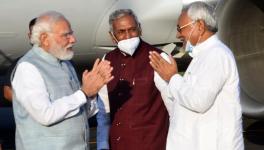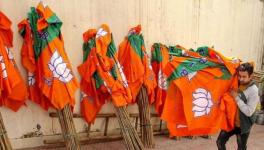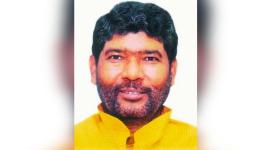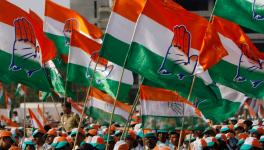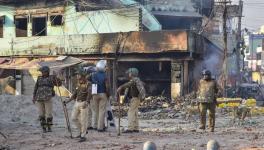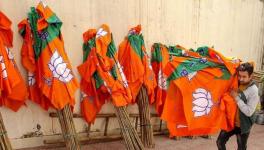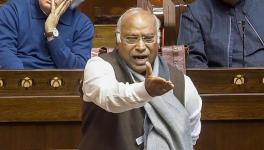Just How Tired is Bihar of Nitish Kumar Rule?
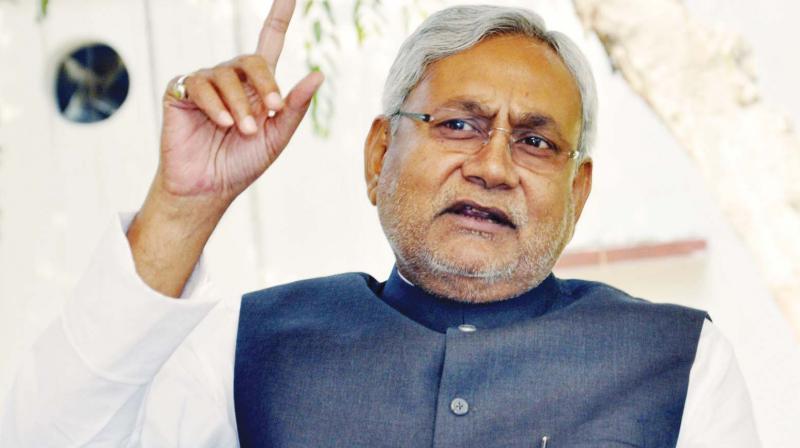
When in 2017 Nitish Kumar swerved back into the BJP fold, many watchers of Bihar politics predicted that the eventual loser of this manoeuvre would be the Chief Minister himself. This prognosis seems truer than ever now, with Assembly elections due this week.
It has become evident from the BJP’s campaign so far that it had welcomed Kumar back in 2017 only to avenge his unceremonious 2013 exit from the NDA. By splitting the Lok Janshakti Party (LJP) and pitting it against Kumar’s Janata Dal (United), the BJP may well be settling scores. It is also sending a message to its core Brahmin, Rajput, Bhumihar and Bania voters that they plan to capture the political space in Bihar by weakening an unreliable ally.
This spectre of upper caste rule has dented the intensity of support for JD(U) among its core voters. Kumar’s carefully crafted “coalition of extremes”, which includes extremely backward class voters, Mahadalits, women and elite caste supporters, is visibly fragmented. The scattered EBC population tends to vote in alignment with the dominant caste that is closest in proximity, but this time such mobilisation is listless, also because Nitish’s present tenure did nothing to tackle unemployment.
Speculation that Bhumihar motormouth Giriraj Singh may become BJP chief minister further alienated the non-elite social groups in Bihar. True, the Yadavs too are seen as hegemons, but the Rashtriya Janata Dal (RJD) has allied with a visibly resurgent Left, which has a strong support base among lower castes in several pockets, and the Congress, whose voters include Muslims and Hindu elite castes. This social coalition has sent the message among lower-backward classes and Mahadalits that Yadavs will be kept in check.
The twists and turns in the Bihar election campaign began with the pandemic-linked lockdown. Initially, the Opposition seemed absent and tainted muscleman Pappu Yadav and his “spoiler” outfit, the Jan Adhikar Party (JAP), tried to steal the limelight by distributing relief. But this left Biharis wondering about the source of his funding. People did question the former deputy chief minister Tejashwi Yadav for going silent.
Yet, once the sudden nationwide lockdown was imposed in March, the incumbent JD(U)-BJP regime started getting exposed. First, it aggressively refused to welcome to the state the returning migrants, who mostly belong to oppressed social groups. The rejection of 30 to 40 lakh jobless returning migrants seemed to make true what Sachidanand Sinha had said in his 1973 book about Bihar—that it is treated like an “internal colony” by the Centre.
Even then, in April or May, many still boldly declared that the working classes had been so lured by the siren song of Hindutva that they cared nothing their own suffering during the lockdown. And this is exactly where the BJP became overconfident and started going wrong. It projected Nitish as next chief minister, but made its own ambition to capture Bihar obvious. The result was to split the NDA in two—BJP plus LJP versus BJP plus JD(U). The LJP launched rhetorical attacks against Nitish and praised Prime Minister Narendra Modi, but refused to use his pictures in his party’s campaign banners and struck alliances with minor leaders such as Mukesh Sahni and Jitan Manjhi. [Sahni has some appeal among the aspirational “Ati Pichda” fishermen community in pockets of North Bihar, while Manjhi has some appeal in his community of lower Dalits such as Musahar and Rishidev groups.]
When the campaign drew closer, the BJP resorted to extreme communal polarisation. Its Yadav “face” Nityanand Rai, Union Minister of State for Home Affairs, started by comparing RJD rule with “terrorist” rule. But the BJP retreated soon after, making vague attempts, perhaps strategically, at “damage control”. It is as if the party was acknowledging that communalisation had proved counterproductive for it in the 2015 Assembly election. Kumar remained silent. Then BJP president JP Nadda declared the Centre’s determined bid to go ahead with the divisive CAA, NRC and NPR. Another Union minister, Ravi Shankar Prasad, attacked Tejashwi Yadav for being under-qualified. But people had had enough—they rebutted him with counter-claims that BJP leaders themselves had presented “fake” degrees and that Tejashwi was at least a skilled cricketer.
Ever since, Kumar has been harping on the follies of the Lalu-Rabri era. This sent the message that his 15-year rule has nothing substantial to offer voters. In any case, regardless of socio-political divides, it is widely accepted in Bihar that the last five years have been miserable in terms of development and governance. The 2016 liquor ban deprived toddy-tappers of income and spurred organised liquor and land mafias, which are complicit with the police. The perception among people is that the JD(U) depends upon this mafia for election funding.
Unemployment is so acute in the state today that the Mahagathbandhan’s 10 lakh job promise, whose implementation they have spelt out in detail, has struck a chord with people. BJP’s Deputy Chief Minister Sushil Modi called the Mahagathbandhan target “impossible to meet”, but then Ravishankar Prasad went on to announce 19 lakh jobs. These contradictions have made a mockery of the BJP’s competitive populism plank. That said, with some exceptions, neither political parties nor media are truly underscoring the ruin of Bihar’s sugar, jute, paper, wagon, incense-stick, power-loom, silk and Dalmianagar industries.
Nitish’s seven point “Nishchay” to make Bihar “Saksham” and to skill the youth, women and rural people are things he should already have accomplished. Seeking yet another term to achieve these essential goals only reveals that Nitish has lost his way. He strikes an odd note, blaming geography—the fact that Bihar is landlocked—for its underdevelopment. To top it all, Sushil Modi has claimed Biharis love working outside Bihar, and he is being mocked and caricatured for this.
For all these reasons, Nitish’s speeches seem dull and uninspiring and he is failing to connect with people. Whatever little infrastructure he created has been overwhelmed by the poor focus on healthcare and unemployment, which the reverse migration and agrarian distress have exposed.
Right through the Covid-19 crisis, the chief minister frequently went incommunicado. Being silent and inaccessible badly dented his cultivated image of a performing and hard-working executive. Revulsion over the decentralised corruption and specific grievances of people—such as not allowing para-teachers pay parity with regular teachers—have created strong resentments across Bihar.
Despite all these indications, the BJP stuck to its strategy of organising big rallies addressed by leaders from Delhi. The political scientist James Manor had written in 2016 about the reasons for BJP’s failure in the 2015 Assembly election. One of the reasons, he said, was “extreme over-centralization within the BJP campaign”.
Initial assessments that Asaduddin Owaisi’s MIM would chip into Muslim votes, particularly in eastern Bihar (Seemanchal), also seem to have been ruled out. The polarising statement of Nityanand Rai has enhanced fear and insecurity among Muslims. They are unprepared to risk facilitating a BJP victory by dividing their votes. Moreover, Owaisi’s alliance with Mayawati’s Bahujan Samaj Party and Upendra Kushwaha’s Rashtriya Lok Samta Party, which has fielded candidates across Bihar, has possibly boomeranged. Its ticket-seekers are openly alleging that the Bihar unit extracted money and distributed tickets only to divide Muslim votes. Such a discredited MIM is, quite possibly, advantage Mahagathbandhan.
This election is significant for Bihar, as the campaign emphasises more on concrete employment and economic issues, even though the BJP initially attempted communal polarisation. The BJP’s core voters are more among the vocal middle classes of the dominant castes. This exposes the hypocrisy of the Bihari middle class, which has greater stakes in the BJP’s notion of development. The result on 10 November would tell us clearly if Bihar is ready to set aside communal polarisation and rhetoric. The next question will be whether the new regime—most likely led by a young and inexperienced chief minister—will deliver people’s needs. How long, after all, can Bihar remain a supplier of cheap labour to India’s growing urban pockets? This is a question Bihar has been asking since long, and there is no easy answer to it.
The author teaches modern and contemporary Indian history at Aligarh Muslim University. The views are personal.
Get the latest reports & analysis with people's perspective on Protests, movements & deep analytical videos, discussions of the current affairs in your Telegram app. Subscribe to NewsClick's Telegram channel & get Real-Time updates on stories, as they get published on our website.










